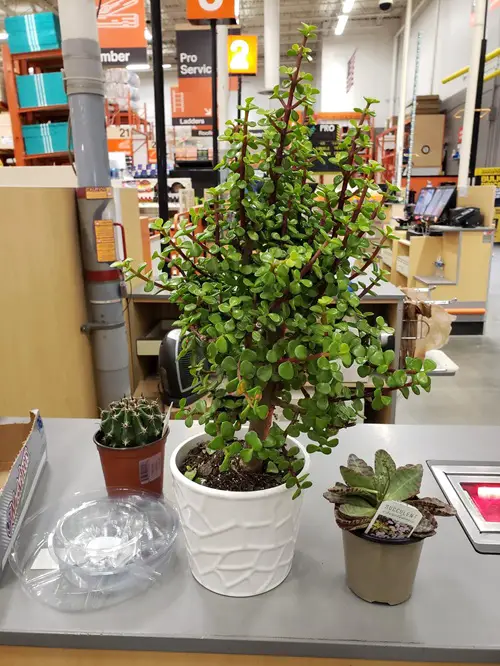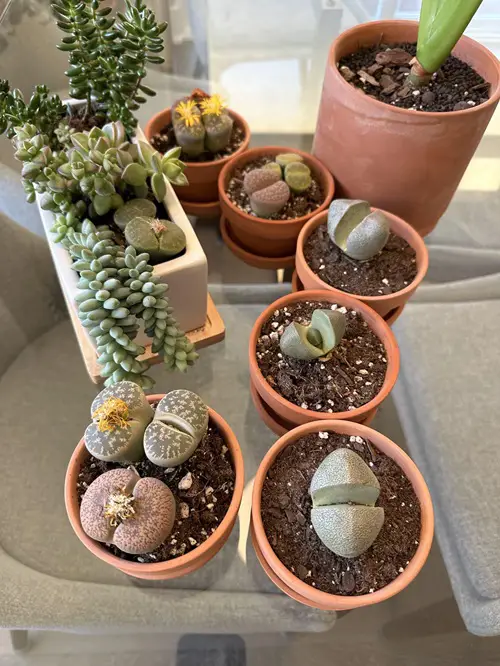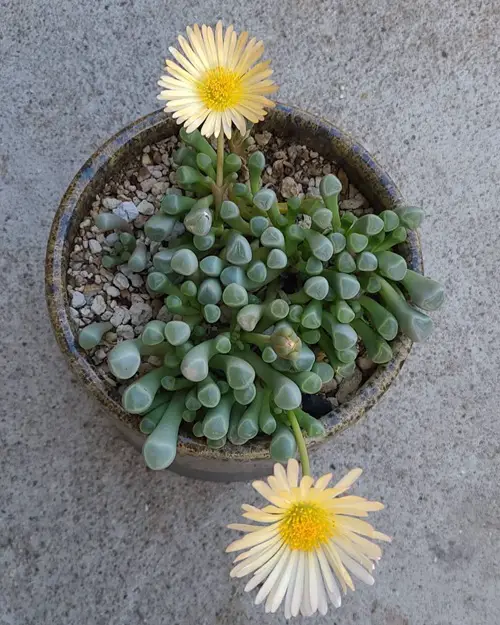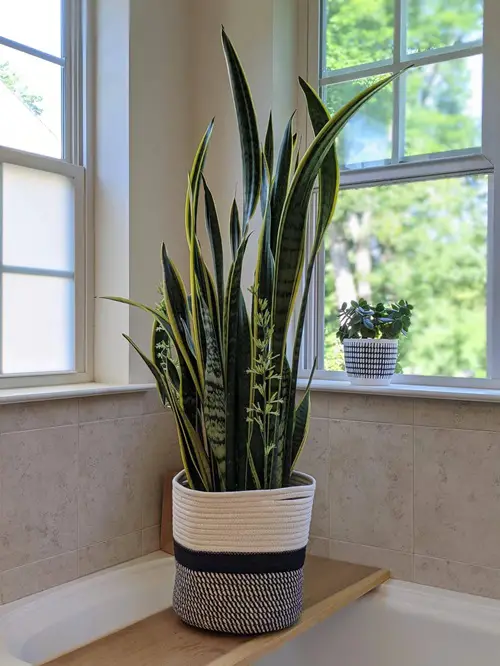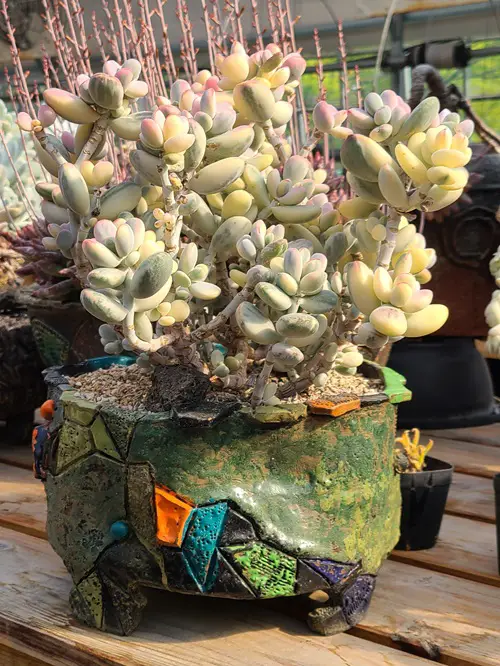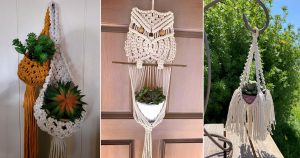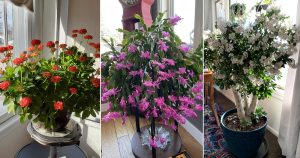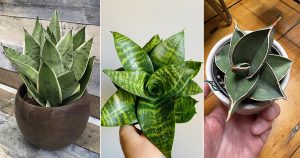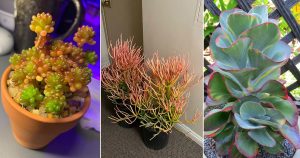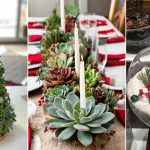These popular African Succulent Plants will surprise you with their admirable resilient nature, interesting shapes, and structures!
Here is a list of African Succulent Plants that are popular and diverse groups of plants that can withstand harsh desert conditions. Discover some of these exotic beauties in this article!
African Succulent Plants
1. Elephant Bush
Botanical Name: Portulacaria afra
USDA Zones: 10-11
Have you noticed, it looks so similar to a Jade plant? This beauty hails from South Africa, bears tiny glossy leaves, and grows like a shrub. It can graciously survive on very little water for a long period which is why it is good to grow in dry climatic regions!
Fun Fact: The leaves are very much edible with a tangy flavor, perfect for preparing salads!
2. Living Stones
Botanical Name: Lithops
USDA Zones: 10-11
Living stones are lip-like tiny succulents that grow vigorously on porous sandy soil and appear like colorful pebbles or stones on the ground. Did you know this peculiar shape and structure is for protection? It helps to avoid hungry herbivores in their home-grown environment that is South Africa and Namibia.
3. Zebra Haworthia
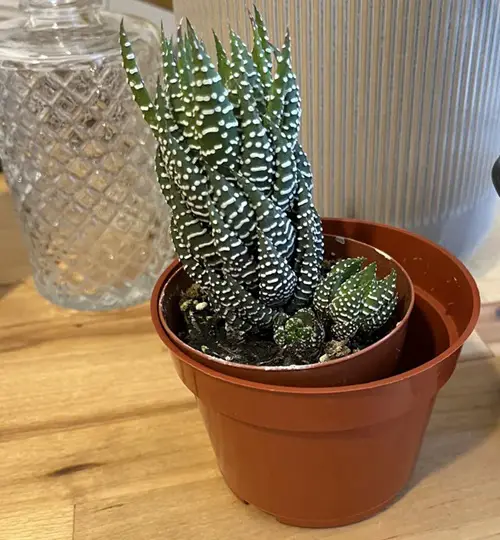
Botanical Name: Haworthiopsis fasciata
USDA Zones: 10-11
A popular houseplant, the Zebra Haworthia is famous and desired for its distinct white stripes on the tiny green foliage and that is where the name comes from. It is considered ideal for any indoor space because of its slow-growing and hardy nature. Just ensure that you do not overwater these drought-tolerant ones!
4. Fairies Washboard
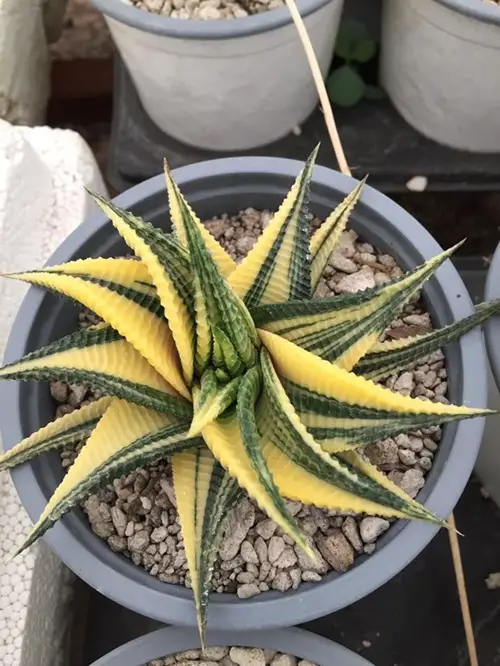
Botanical Name: Haworthiopsis limifolia
USDA Zones: 10-11
Haworthiopsis limifolia succulents are adored for their small structure formed by the rigid, dark green foliage in a typical rosette pattern with pointed edges. This small plant bears tubular, white flowers with greenish-brown midrib, and when they are not flowering they look like tiny Aloe vera plants!
5. Tree Aloe
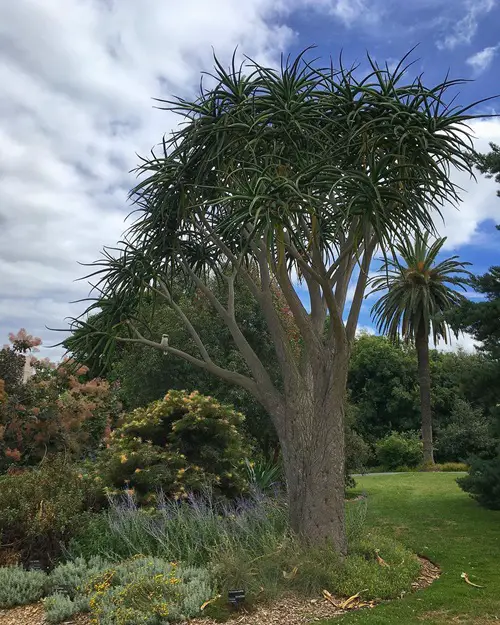
Botanical Name: Aloidendron barberae
USDA Zones: 9-11
You are looking at one of the most different forms of Aloe! This succulent is the largest Tree aloe among other Aloes. It grows up to 20 tall and grows abundantly with its interesting accent in the regions of East Africa. The structure of this giant succulent brings a pleasant focal point in arid landscapes.
Moreover, the pink-orange flowers that bloom in winter add more to its uniqueness.
6. Ice Plant
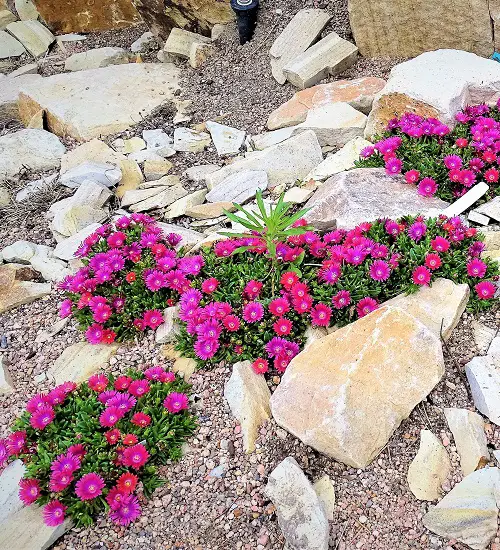
Botanical Name: Delosperma species
USDA Zones: 4-11
Another one from Africa, the Ice plant bears bright, daisy-like flowers in purple and pink shades which contrast beautifully with its glossy leaves. Its name comes from its shiny, ice-like leaf surface, and is a highly drought-tolerant succulent that yearns to thrive in full sunlight, fit for ground covers.
7. String of Pearls
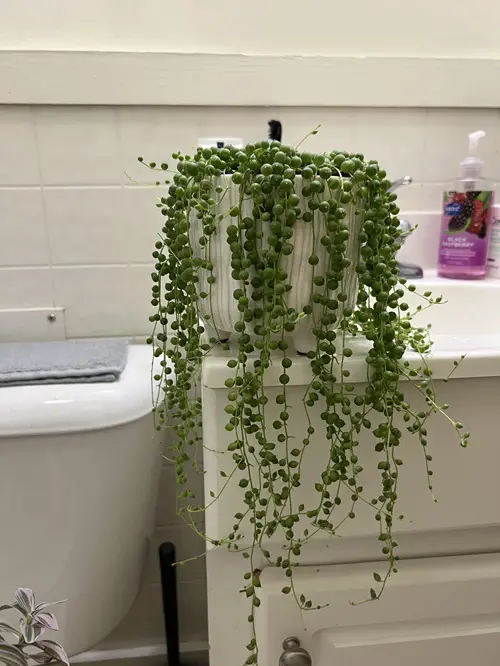
Botanical Name: Curio rowleyanus
USDA Zones: 9-12
This succulent is popular for its graceful trailing strands of small, round, pea-like foliage, and also from where it gets its name, “String of Pearls,” it goes best when planted in hanging baskets with a few DIY decors!
Additionally, it is regional to the dry areas of South Africa and thrives in other tropical regions as well.
8. Bushman’s Hat
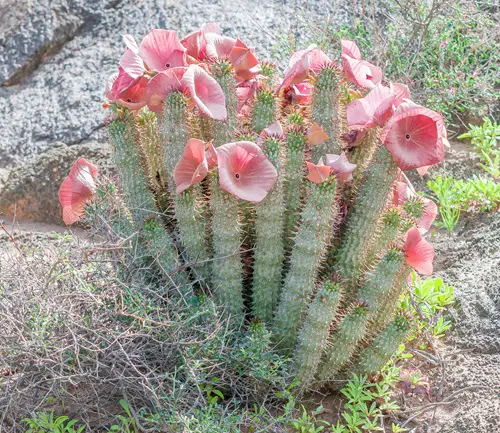
Botanical Name: Hoodia gordonii
USDA Zones: 10-11
Straight from the Kalahari deserts of southern Africa, the interesting Bushman’s Hat succulent has quite a weird appeal with fleshy, cactus-like stems and a quirky star-shaped flower that has a distinct odor.
Surprisingly, it is quite popular among the Indigenous groups to suppress hunger and thirst during long desert treks.
9. Quiver Tree
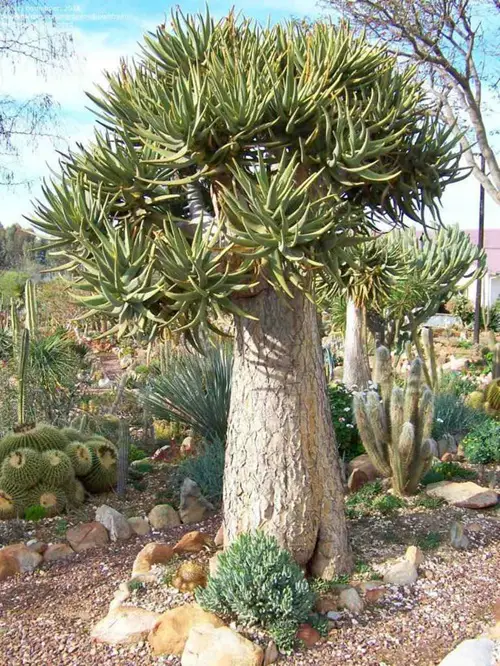
Botanical Name: Aloidendron dichotomum
USDA Zones: 9-11
Another unique tree-like succulent on the list! From South Africa and Namibia, the Quiver tree has smooth, spiny leaves and yellow flowers that bloom in winter. This majestic plant can grow up to 30 feet tall, and additionally, the hollow branches were traditionally used by Indigenous San people to make quivers for arrows hence its name!
10. Baby Toes
Botanical Name: Fenestraria rhopalophylla
USDA Zones: 10-11
Also called Window succulents are the most adorable plants on this list! Baby Toes are low-growing succulents that are local to the coastal areas of Namibia and South Africa named for their translucent “windows” at the leaf tips which also resemble the tiny feet of babies!
Interestingly these tiny windows allow sunlight to pass deep into the plant, helping it to grow and develop.
11. African Milk Tree
Botanical Name: Euphorbia trigona
USDA Zones: 9-11
Despite its cactus-like appearance, it is typically a succulent from the Euphorbia family, native to Central Africa. It features upright stems with spiny ridges and small green leaves along the edges that create a tall, bushy appeal.
In addition, it is often believed that it brings good luck to one’s family and is quite popular among the Indigenous community of the region.
12. Snake Plant
Botanical Name: Dracaena trifasciata
USDA Zones: 9-12
Did you know that this versatile houseplant is also from West Africa? Well, yes! and it is popular for its low-maintenance nature, air-purifying abilities, and so a good start for beginners.
Featuring sword-like long upright foliage with an interesting pattern of light and dark green shades, this succulent sets quite the appeal of an aesthetic setup!
13. Aloe Vera
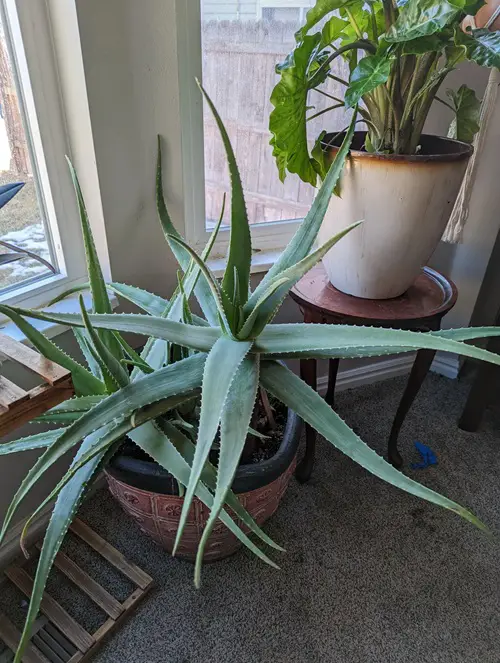
Botanical Name: Aloe barbadensis
USDA Zones: 9-11
The popular Aloe vera hails from Northern Africa, well-known for its soft and spongy foliage that contains a gel, used for soothing burns to treating sunburns. This tropical plant features fleshy, slightly lance-shaped foliage with tiny spikes on the edges, that grows in a basal rosette pattern.
It flourishes best in full sunshine and demands less water, mostly preferring annual temperatures within the range of 62°F-80°F, however, can withstand between 50°F-95°F.
Caution: The leaves contain substances like Aloe and Aloin that can be harmful if ingested.
14. Pig’s Ear
Botanical Name: Cotyledon orbiculata
USDA Zones: 9-11
Pig’s Ear hails from South Africa and it bears thick, oval leaves with a reddish border that overall looks like a pig’s ear! However, this weird-looking succulent has its own class. It bears orange and red, bell-shaped flowers that look gorgeous once they bloom in the spring season.
And, the bonus is the leaves of this succulent are used in traditional African medicine to treat minor ailments.
Have any of these beautiful plants made it to your collection? Share your favorite African succulents and experiences in the comments below!

